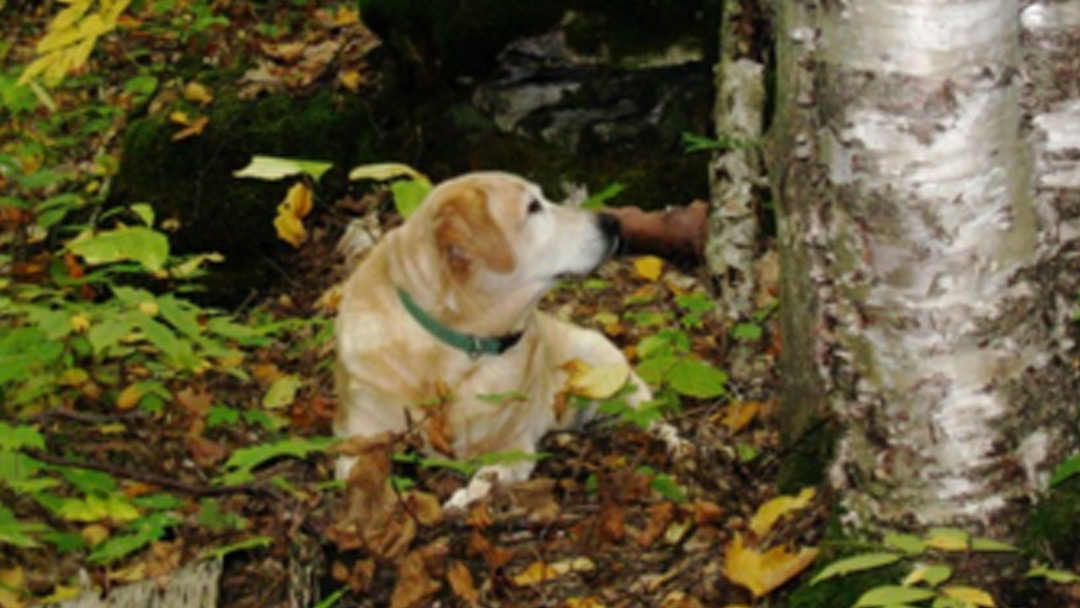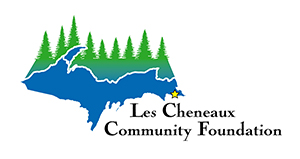Protecting our community
Important Information about Blastomycosis
Blastomycosis Field of Interest Fund
Blastomycosis is a genuine concern in our region. While this may be more of a threat to our dogs and other pets, it is also very dangerous, and can be deadly, for humans if not detected and treated early enough. The best way to combat Blastomycosis in our community is to:
- Become well-informed
- Share information with others
- Support efforts to make the medical community and public better educated about this disease
- Support research
The Les Cheneaux Community Foundation has established a fund specifically to help accomplish this.
If you are interested in donating to the Blastomycosis Field of Interest Fund, please make your check out to LCCF and earmark/memo it for “blastomycosis”. Donations can be mailed to:
Les Cheneaux Community Foundation
P.O. Box 249
Cedarville, MI 49719
What Is Blastomycosis?

Blastomycosis is a fungal infection that can lead to serious and sometimes fatal disease. Dogs and humans are most commonly at risk, although other animals are also susceptible. The fungus grows in soils, especially soils that are very moist with a high organic content and an acid pH. Under certain conditions the fungus forms spores that can be inhaled, especially when the soil in which it is growing is disturbed. Once the lungs are infected, the fungus can affect other parts of the body, including the eyes, skin, genitourinary tract, bones, and joints. Blastomycosis causes a variety of symptoms and can lead to serious illness and death.
Where is Blastomycosis Found?
Blastomycosis has been identified in various regions of the U.S. and Canada, especially Michigan, Wisconsin, the Ohio River Valley, Southeastern USA, and Canada’s Georgian Bay. Certain areas of Michigan’s Upper Peninsula are regarded as high-incidence “hot spots.” Residents and visitors of these areas should become well informed about this threat.
To date, blastomycosis is an under-reported disease, and still not enough is understood about it. Blastomycosis is a reportable disease for humans but not for animals in Michigan.Therefore, increased knowledge, reporting, collaborative efforts, and support of research are critical to combat this problem.
Is Blastomycosis Contagious?
Current research indicates that blastomycosis is not contagious, with the very rare exception being an infected skin lesion making direct contact with broken skin or mucous membranes.
Signs, Symptoms, and Diagnosis
In its early stages blastomycosis can present as a variety of symptoms, which can vary from humans to dogs. You might see:
Canines: Most commonly infected, but not restricted to, are younger, sporting dogs.
- Fever
- Loss of Appetite
- Weight Loss
- Eye Discharge
- Eye Inflammation, especially the iris
- Difficulty Breathing
- Skin Lesions
- Limping or Lameness with no apparent cause
Humans:
- Flu-like symptoms
In humans about half of blastomycosis infections do not result in symptoms or illness.
Some at these symptoms are commonly seen in other illnesses, and diagnosis as blastomycosis is often missed. Effective treatment of blastomycosis depends on an early diagnosis.
When to Contact a Veterinarian or Physician
If you suspect blastomycosis, consult your veterinarian or physician and mention your concerns to determine if testing is appropriate. Current clinical blastomycosis tests are not always accurate, so follow-up evaluation should be discussed. If your health care provider is not familiar with blastomycosis, ask that they consult with someone who is. You may have to be insistent that the clinician run blastomycosis tests.
Help and Treatment
There are just a few medications that are currently used to treat blastomycosis. They include Variconizole, Itraconazole (Sporanox), or other “azole” drugs, Amphotericin B, and other similar drugs. Effective treatment relies on early diagnosis and intervention by your vet or physician.
Prevention
Currently there is no vaccine available to prevent blastomycosis, so we support research efforts to help find one. The best ways to limit possible exposures are:
- Learning what the areas and conditions may be likely to harbor the fungus
- Avoid digging in or disturbing high risk soils
- Avoid rotting wood
If digging or excavation in affected areas must be done, wearing a surgical mask may be advisable, and keeping dogs, cats, or people with compromised immune systems away from this area is highly suggested.
Soil Testing
Soil testing can be accomplished in research facilities but consumer tests are presently unavailable.
Spread the Word
View, download and/or print the LCCF Blastomycosis Brochure and share with your family and friends.
More Resources
Below you will find helpful links for blastomycosis symptoms and treatment in dogs and humans, as well as other resources for blastomycosis information.
Dogs:
The St Ignace News and Les Cheneaux Islands Weekly Wave article May 29, 2008
Humans and Dogs:
Merck Manual: merckmanuals.com/home/infections/fungal-infections/blastomycosis
Emedicine: emedicinehealth.com/blastomycosis
Centers for Disease Control: cdc.gov/fungal/diseases/blastomycosis
Listing, by city (MI) of physicians who treat human blastomycosis infection: lifescript.com/blastomycosis-mi
Additionally, consultation with the following providers and/or researchers is recommended:
Dennis J Baumgardner, M.D. (414) 219-5191 (focus is on environmental sources of the fungus)
Clinton Groover, D.V.M. (906) 647-6512 groover@msu.edu
Carol A. Kauffman, M.D. ckauff@umich.edu
Daniel K. Langlois, D.V.M. (517) 353-5420 langlo21@cvm.msu.edu
Dr. L. Joe Wheat, MiraVista Diagnostics, Indianapolis, IN., jwheat@miravistalabs.com
Dr. Alfred Legendre, (865) 974-8387, alegedr@utk.edu
MiraVista Diagnostics website: www.miravistalabs.com
